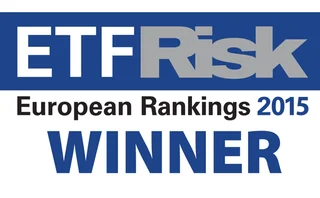
China's changing face
Winston Ma, vice-president of the products and solutions group at JP Morgan Securities in New York, believes that China is opening up to foreign investors, largely thanks to developments in the structured products market
Investing in China has dominated the international investment community in recent years as one of the hottest topics. For many years, however, foreign investors interested in China could only access the offshore market with limited investment alternatives, such as Chinese companies listed on the Hong Kong Exchange or their American Deposit Receipts traded in New York. Now, following decades of free market reforms in China, its domestic stock market is increasingly open to foreign investors, facilitated by the structured products emerging from both on-shore and off-shore markets.
These new investment channels are driven by China's continuous effort to institutionalise its stock market and to privatise the ailing state-owned sector by, among other things, increasing foreign participation in its domestic stock market. One of the biggest and most remarkable steps was the adoption in 2002 of the Qualified Foreign Institutional Investors (QFII) system, which has continued to attract global money managers and securities firms to the domestic stock market, also known as the 'A-share' market.
The QFII system permits large foreign institutional investors to participate directly in China's domestic RMB-denominated capital markets. Together with financial innovations in China, the QFII system has resulted in the creation of many new investment vehicles for foreign investors, representing a broad spectrum of investment styles and risk-reward profiles.
Access products
Since the QFII scheme was launched in 2002, firms have been offering clients market access products linked to A-shares and A-share indexes. For example, a QFII could first purchase A-shares in China then issue to offshore investors the access products (such as zero-strike warrants) linked to such A-shares. The access products essentially replicate the economic exposure of the underlying A-shares.
QFII access products could go well beyond exposures to pure A-shares. Recent financial innovations in China have brought to market a wide range of investment products. A few QFII investment banks have reportedly offered access products linked a variety of investment products in the China market, which includethe following:
- Exchange-traded funds (ETF). ETFs offer an efficient way for investors to invest in a broad market index. The Shanghai Stock Exchange launched the first A-share-based ETF in 2004 - the Shanghai ETF50, and the Shenzhen Stock Exchange introduced a similar innovative fund product around the same time - listed open-ended funds (LOFs).
- Index products. Index-linked products are gradually gaining popularity in China, although speculation is still the dominant theme. Following the introduction of the Shanghai Shenzhen 300 Index in 2005, which was the first index to cover both the Shanghai and Shenzhen Stock Exchanges, the market should start to see more index funds and index-linked products in the near future.
- Convertible bonds. Chinese convertible bonds have been popular among the QFIIs since the inception of the QFII scheme. They have special features that reflect the unique shareholding structure in China's listed companies, making them interesting investment alternatives to Chinese stocks.
- Corporate warrants and options. Corporate warrants and exchange-listed options were brought back to the market in 2005, a decade after options and warrants trading was banned (shortly after its inception) in early 1990s because of over-speculation in the market. They offer investors a leveraged investment on the underlying stocks or indexes.
Investors could also seek specific exposure from QFII investment banks through more structured investments. In that case, the QFII would purchase the base shares or investments underlying the offered structured investment and then dynamically trade in the QFII market to hedge its risk exposure as illustrated in figure 2. Although structured products and derivatives could offer investors more tailored investment exposures, sometimes they may involve higher structuring costs.
Chinese characteristics
These new investment vehicles, however, exhibit important "Chinese characteristics" because of the existing economic and regulatory infrastructure. In particular, the unique 'segregated equity ownership' issue - namely, about two-thirds of the shares of the listed companies are held by the state in the form of non-tradable shares - has led to a lot of abnormal trading behaviour in the public A-share market (the part of equity ownership of listed companies that are publicly tradable on the exchanges). It is therefore critical that foreign investors understand the subtle differences in the investment products that are available in China, even though they appear similar to their counterparts in more developed markets.
Take index products, for example. Many widely used indexes in developed markets - such as the S&P 500 index - are weighted according to market capitalisation. This approach faces challenges in China because, as described above, the float-to-outstanding shares ratio for the listed companies averages approximately 33%. This raises the complicated issue of which should be used as the appropriate weights for the stock indexes: the free-float, the total capitalization, or some adjusted amount? On balance, the Shanghai Shenzhen 300 index - as the only index in China to cover both exchanges - adopts a 'floating-adjusted capitalisation' methodology, in which the constituent stock weighting would only be adjusted for large changes in its float-to outstanding share ratio.
Meanwhile, 2005 saw what was indisputably the biggest reform in the history of China's stock market - the so-called 'full-floating' reform, which aims to make all non-tradable shares become tradable A-shares in the near future. This fundamental reform has profound implications on the future valuation and trading behaviour of existing financial instruments, and it is leading to fast-paced financial innovations in the post-reform era.
Again, take index products as an example. An index of full-floating companies should be more suitable than a traditional A-share index for next-generation, index-based structured products. For a traditional A-share index, the overhang of non-tradable shares makes the weights of constituent stocks unstable. That is, a stock's weight in the index would change every time that a large chunk of non-tradable shares was sold to the market. This issue doesn't exist in an index of 'post-reform' companies (ie, all shares are fully floating and tradable), so it could simply use the companies' total capitalisation as the weights for the index, just as the indexes in developed markets such as the S&P 500 index.
The newly adopted QFII system and the latest financial innovations in China have opened up interesting opportunities for foreign investors. This welcome trend should continue as China further implements its World Trade Organisation commitments. Meanwhile, as is often the case, financial products in China are not always exactly what their names would suggest to a westerner, and hence studying their 'Chinese characteristics' is a must for interested investors.
This article is taken from Investing in China - New opportunities in a transforming stock market, Risk Books, 2006. The book is the closest look to date at what's unique about this important, yet somewhat mysterious, market. It is also the first detailed examination of the critical transition that China's capital markets are experiencing, as the ongoing regulatory reforms and financial innovations are leading the markets into a profound transition. To order the book visit www.riskbooks.com
The views and opinions expressed in this article are solely those of the author and not necessarily the view and opinion of JPMorgan Chase & Co or any of its divisions or affiliates. This article is for informational purposes only and is not intended as an offer or solicitation for the purchase or sale of any financial instrument.
Only users who have a paid subscription or are part of a corporate subscription are able to print or copy content.
To access these options, along with all other subscription benefits, please contact info@risk.net or view our subscription options here: http://subscriptions.risk.net/subscribe
You are currently unable to print this content. Please contact info@risk.net to find out more.
You are currently unable to copy this content. Please contact info@risk.net to find out more.
Copyright Infopro Digital Limited. All rights reserved.
As outlined in our terms and conditions, https://www.infopro-digital.com/terms-and-conditions/subscriptions/ (point 2.4), printing is limited to a single copy.
If you would like to purchase additional rights please email info@risk.net
Copyright Infopro Digital Limited. All rights reserved.
You may share this content using our article tools. As outlined in our terms and conditions, https://www.infopro-digital.com/terms-and-conditions/subscriptions/ (clause 2.4), an Authorised User may only make one copy of the materials for their own personal use. You must also comply with the restrictions in clause 2.5.
If you would like to purchase additional rights please email info@risk.net
More on Exchange-traded products
Realising the China opportunity
Webinar: HKEX
One size does not fit all: Smart beta explained
Sponsored feature: WisdomTree Europe
ETF Risk European Rankings 2015: ETF trading platform for institutional investors
Sponsored feature: Tradeweb
ETFs – Transforming the investment landscape in Asia
Sponsored survey analysis: Deutsche Asset & Wealth Management
Flood of oil ETF investors reshaping market, analysts say
'Massive' inflows cushioned oil price drop in early 2015, but could easily reverse
Currency-hedged ETF surge prompts hedging concerns
Eurozone QE programme prompts wave of investor interest
Currency-hedged ETF inflows boom
Investor interest sparks race to construct new products
Shanghai ETF option volatility spikes on China market fears
A crackdown on margin financing strengthens bearish sentiment







